Kiwi Ears Orchestra Lite
A long term review
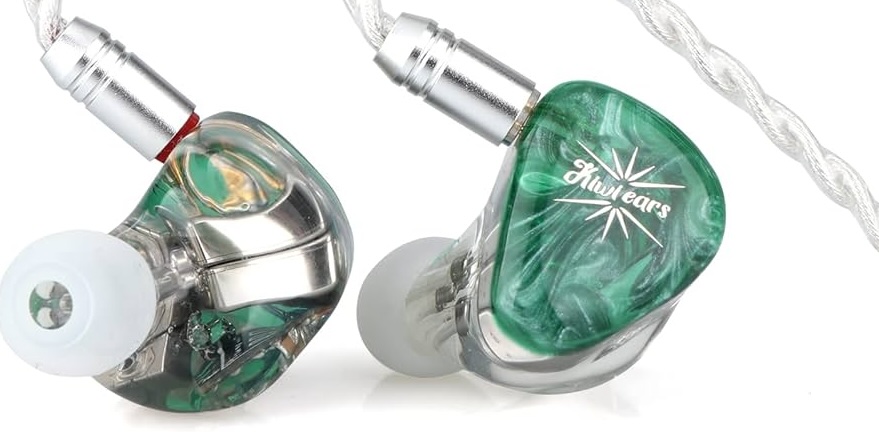 Of all the IEM’s I have used this year the Kiwi Ears Orchestra Lite have proven
the most resilient. Time and again these are the IEM’s I have gone back too when
I want to really hear a new release the way it should sound.
It is also my goto IEM when out walking, the all BA design and the seal mean it
has the best passive noise isolation of any IEM in my collection.
Of all the IEM’s I have used this year the Kiwi Ears Orchestra Lite have proven
the most resilient. Time and again these are the IEM’s I have gone back too when
I want to really hear a new release the way it should sound.
It is also my goto IEM when out walking, the all BA design and the seal mean it
has the best passive noise isolation of any IEM in my collection.
So, I thought after 6 months, it deserved some further recognition, I believe it is unsung classic.
Packaging and unboxing experience
The Kiwi Ears Orchestra Lite does not really provide that wow factor out of the box, it’s a ‘standard’
IEM box with nothing to really make it stand out in this crowded market:
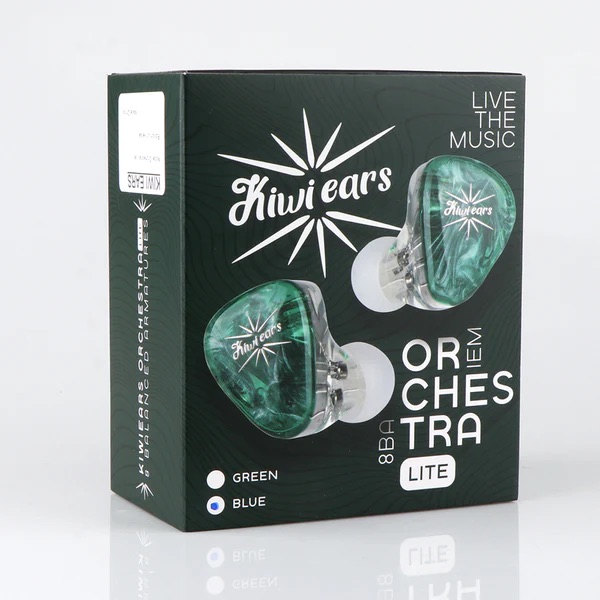
Once open you get a reasonable nice carrying bag and a good selection of ear tips:
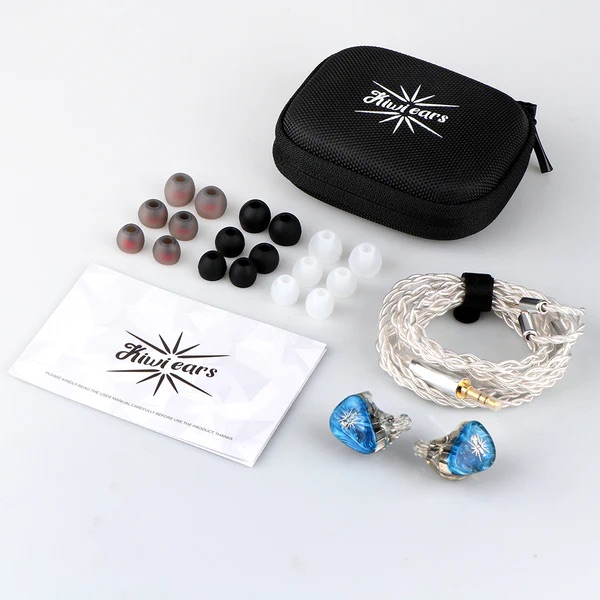
I ended up using my own ear tips as I wanted a deeper fix and a better seal, but you may be fine with the supplied ear tips.
But once you start admiring the IEM’s themselves (and the cable to a lesser extent) you realise Kiwi Ears decided to correctly spend the budget on what really matters the build quality of the IEM and ultimately the sound.
Build and Design:
The resin construction of the Orchestra Lite downright gorgeous. The craftsmanship is meticulous, with a comfortable, ergonomic design that ensures hours of fatigue-free listening.
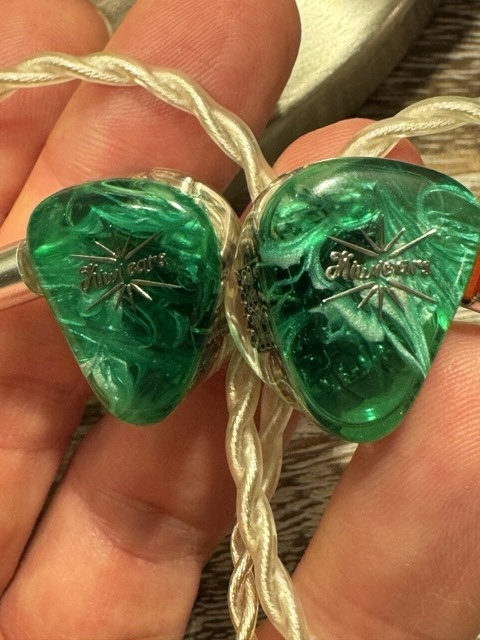
The semi-transparent shell design itself is lovely, to allow us ‘audio nerds’ see ‘under the hood’ :
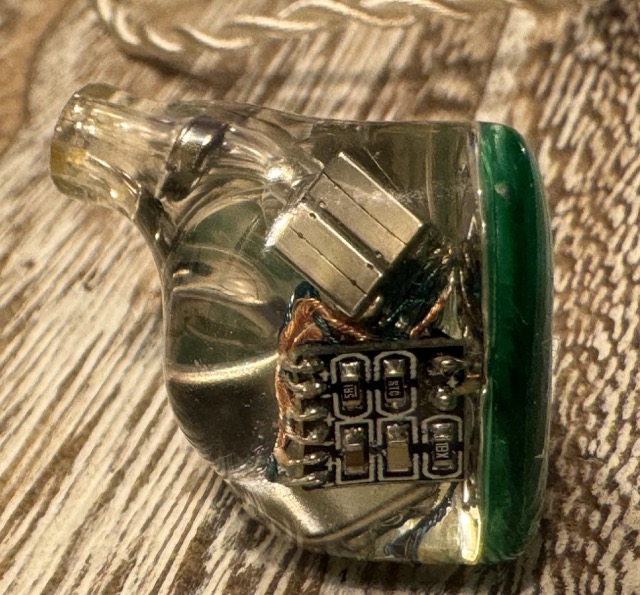
Sound Signature: A Symphony of Detail
So, my initial feeling when I first tried these IEM’s was of astonishment, I couldn’t believe I was hearing the pinpoint accurate details within the mix. I went back and forth between these are a few of the IEM’s I was listening to at the time, like the Truthear Zero’s, various Moondrop IEM’s and even my ER2XR’s and everytime (and with almost all genre’s of music) the Orchestra Lite’s were levels above as far as sound quality is concerned. I would describe the detail almost like an IEM version of the legendary Sennheiser HD600 except with better bass, but with so much midrange detail balanced with excellent treble that vocals and details pop out of the mix.
I was actually reminded of these feeling when I watched the YouTuber’s Revolve’s reaction to first hearing the Kiki Ears in one the headphone shows recent YouTube videos:
Bass
While the bass isn’t earth-shattering, it’s undeniably musical and well-controlled. The warm low-end offers a satisfying counterpoint to the detailed mids and highs. I find this balance to be ideal, especially during longer listening sessions where overly aggressive bass can become fatiguing.
Midrange
Over the months, the midrange is where the Orchestra Lite has truly stood out for me. The emotive weight it lends to vocals and the natural timbre it confers to instruments make it my goto IEM for enjoying music with a reference quality that was “true to the source”.
Treble
The treble on the Kiwi Ears Orchestra Lite is excellent, it perfect compliments the midrange without sounding artificial, and provides those ’technicalities’ which are elusive on cheaper IEM’s in the < $100 price range.
One interesting thing in the measurement section later is you can ‘see’ in those measurements how different ear tips and different insertion depth can make a large difference to how you will hear the treble region.
Sound-stage and Imaging: A Walk in a Musical Park
The Orchestra Lite offers a reasonalbe good sound-stage. However, it’s the precise imaging that truly enriches my listening experience. The clear placement of instruments and vocals brings the music to life, adding a dynamic layer which is to use that audiophile cliché ‘holographic’ at times.
Some Measurements
While a “squiq” Frequency Graph (like the ones I present below) can show you the tonal response of an IEM, they can be unreliable specifically because the individual doing the measurements uses different tips, different insertion depth and probably has a ‘clone’ coupler rather than the more accurate (but more expensive) headphone measurements tools like the BK-5128. But the most important difference (and this IEM’s has really brought this home to me) is that the FR graphs on “squig” rarely show proper channel differences (due to the placement issues above), never show distortion and rarely show unit variances.
As an idea of just the different insertion depths can make to an IEM here are various insertion measurements of different tips at different insertion depths for the Orchestra Lite, this is why I feel that people should not use Auto-EQ beyond about 5K as their person HRTF and preference for tips will no doubt have can change dramatically the treble response especially (even if they get a good seal):
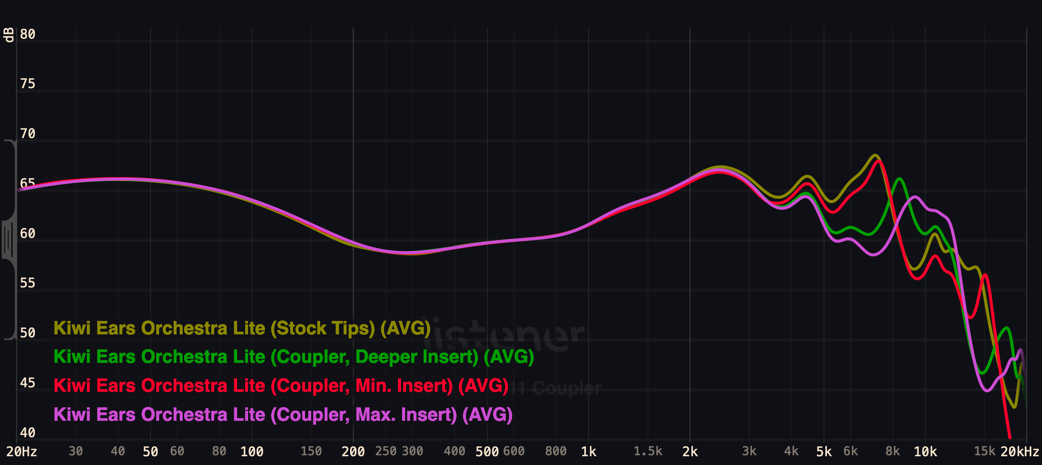
For my specific HRTF (Head Related Transfer Function), I preferred a deeper insert with the Orchestra Lite as that got the balance of good bass with excellent treble but left the amazing midrange intact, but your own HRTF will no doubt be different.
One very nice aspect of the Kiwi Ear Orchestra Lite (and something I haven’t seen mentioned elsewhere) was the “statement provided with the IEM” of the level of QA done on each and every IEM leaving their factory, I believe this has meant excellent channel matching and reduced distortion and this more than anything has contributed to the amazing accurate sound-stage and detail I hear with this IEM.
So as far as tonality is concerned this graph might give you an idea compare to some well known IEM’s:
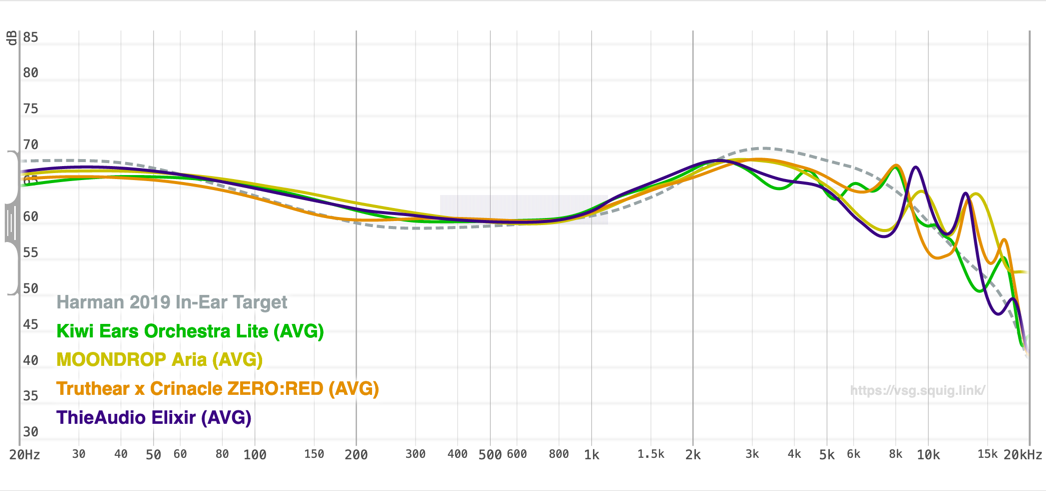 As you can see the Orchestra Lite is close to the Harman target but a little warmer in the upper bass and a little resessed in the 3K-5K region
(which itself is region of the Harman IE target that has come under critizism for being too high).
As you can see the Orchestra Lite is close to the Harman target but a little warmer in the upper bass and a little resessed in the 3K-5K region
(which itself is region of the Harman IE target that has come under critizism for being too high).
Since the Orchestra Lite was released, Kiwi Ears have been release numerous very good IEM’s at different price points, but I have noticed they have been moving to more ‘fun’ V-shaped sound signatures as shown in this comparison:
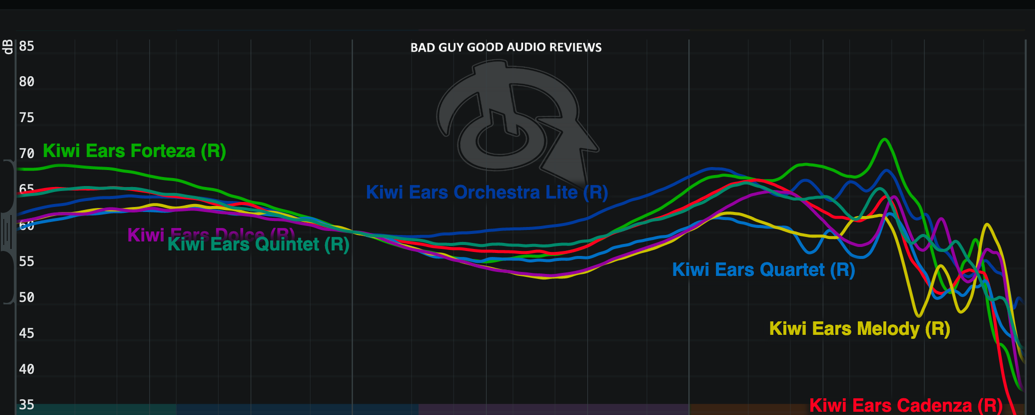
I think your second IEM (after getting a balanced one like the Orchestra Lite) should be a V-Shaped IEM as it can be a fun listen for specific music genres, I loved the V-Shaped FiiO FX-15 sound signature with the extra sub-bass and the sparkly treble, but to use that IEM long term I would EQ while the Orchestra Lite needs no EQ, in my opinion.
What could be better:
Sub-bass:
Doing a tone sweep with my preferred tips, I find that the bass rolls off around 30hz, while this is perfectly acceptable for the majority of music I do have other IEM’s that have deeper sub-bass, but they are dynamic driver IEM’s and lack the detailed bass that the Orchestra Lite provides.
Cable Connectors:
Six months in, the detachable 2-pin cable have mostly proven sturdy, but I would actually like a recessed 2-pin to protect the pins from being bent, the pins have slightly bent a few times and its simple to fix but I will probably replace the cable in the next few months.
BA in-ear pressure build-up
This is more a reminder but while an all-BA design isolates the outside sound better than a dynamic driver it does this at the cost of a little bit of in-ear pressure and I find that I have adjust the Orchestra Lite in my ears every 10 / 20 minutes.
Rating
I gave the Kiwi Ears Orchestra Lite a pragmatic rating 5, because it is still after 6 months and listening to many competitors my goto IEM’s for evaluating music. Unlike most IEM’s I try the Kiwi Ears need no EQ.
Conclusion
Note: I would like to thank Lillian @ Linsoul for original recommending the Kiwi Ears Orchestra Lite - if you are interested in purchasing it here is a non-affiliated link to their store: here
After six months, the Kiwi Ears Orchestra Lite continues to be a rewarding audio investment. It shines in revealing musical details, making it not just an IEM but a reliable companion for long walks and thoughtful moments. If you’re seeking an IEM that delivers in terms of both comfort and sonic fidelity, this is one that deserves a spot on your shortlist.
In conclusion, the Kiwi Ears Orchestra Lite is a standout performer in the neutral IEM category, especially for those who prioritize midrange. Its ability to deliver a balanced, detailed sound across all frequencies, coupled with its build quality and comfort, makes it a top choice for both audiophiles and casual listeners alike. Its performance over the past six months has not only been consistent but has also set a new standard in its class.